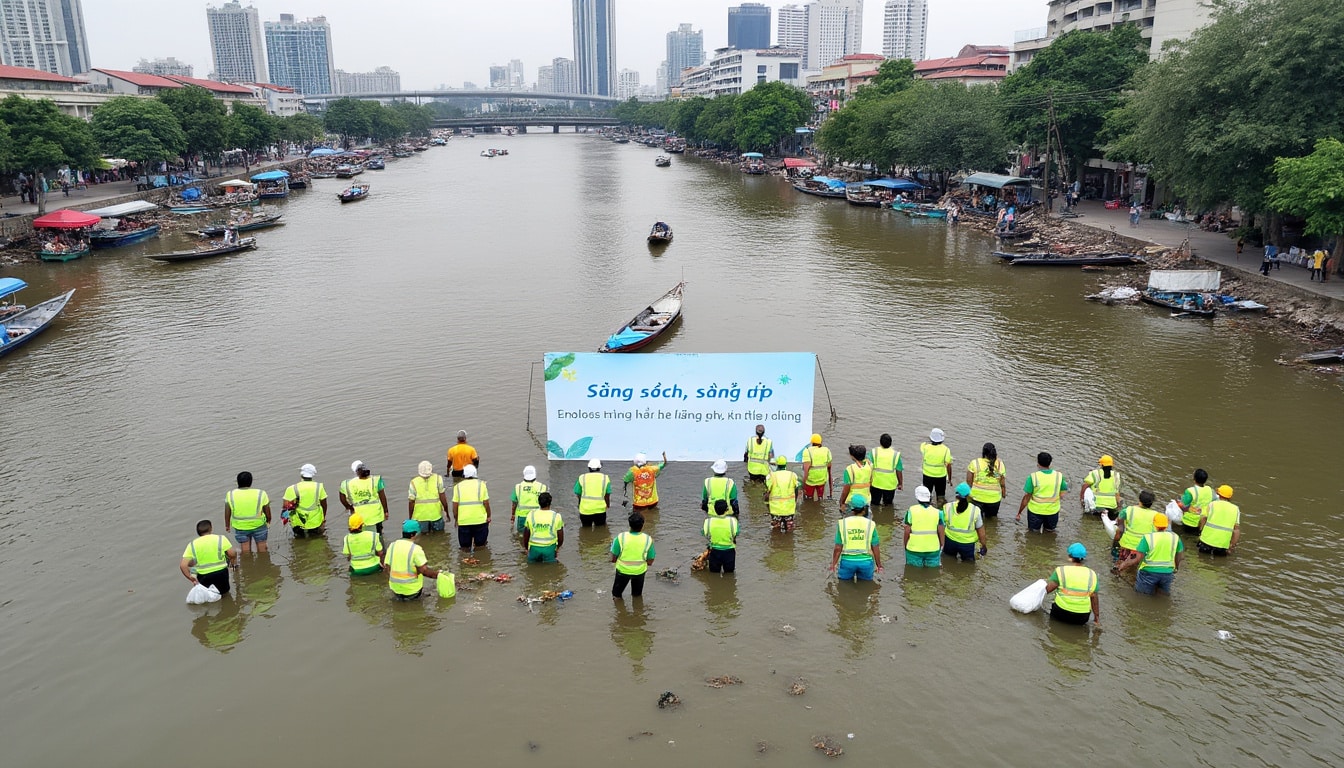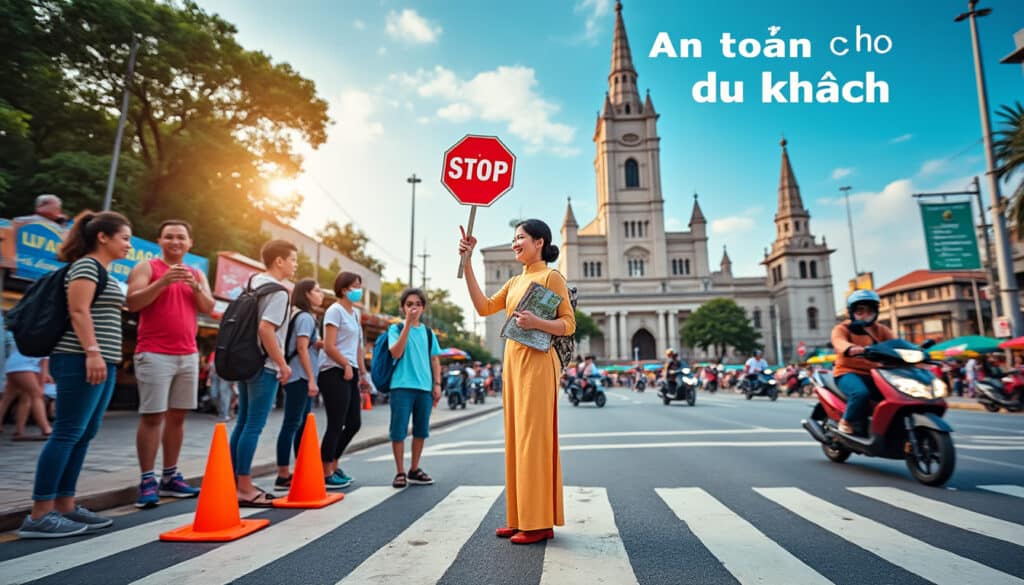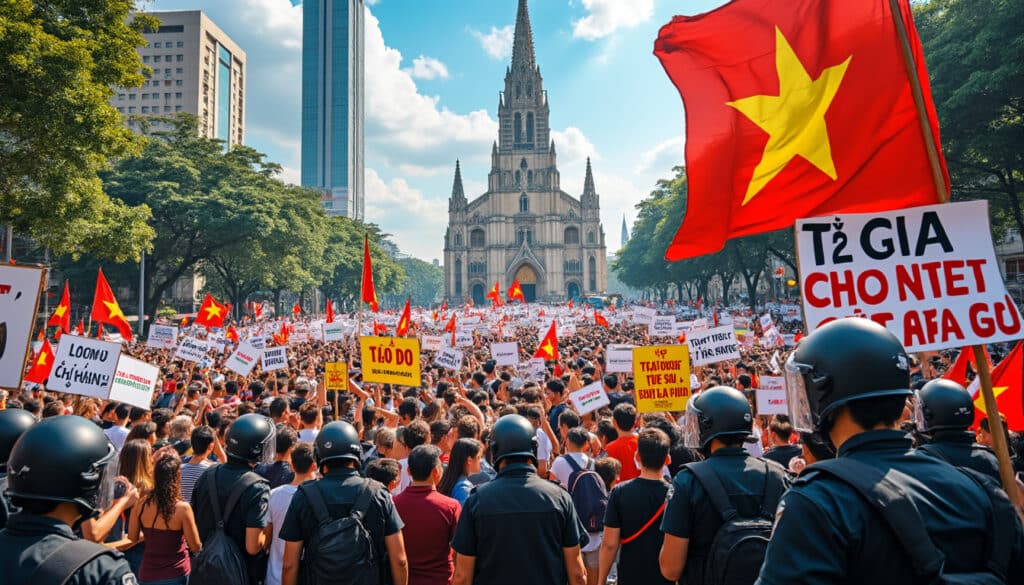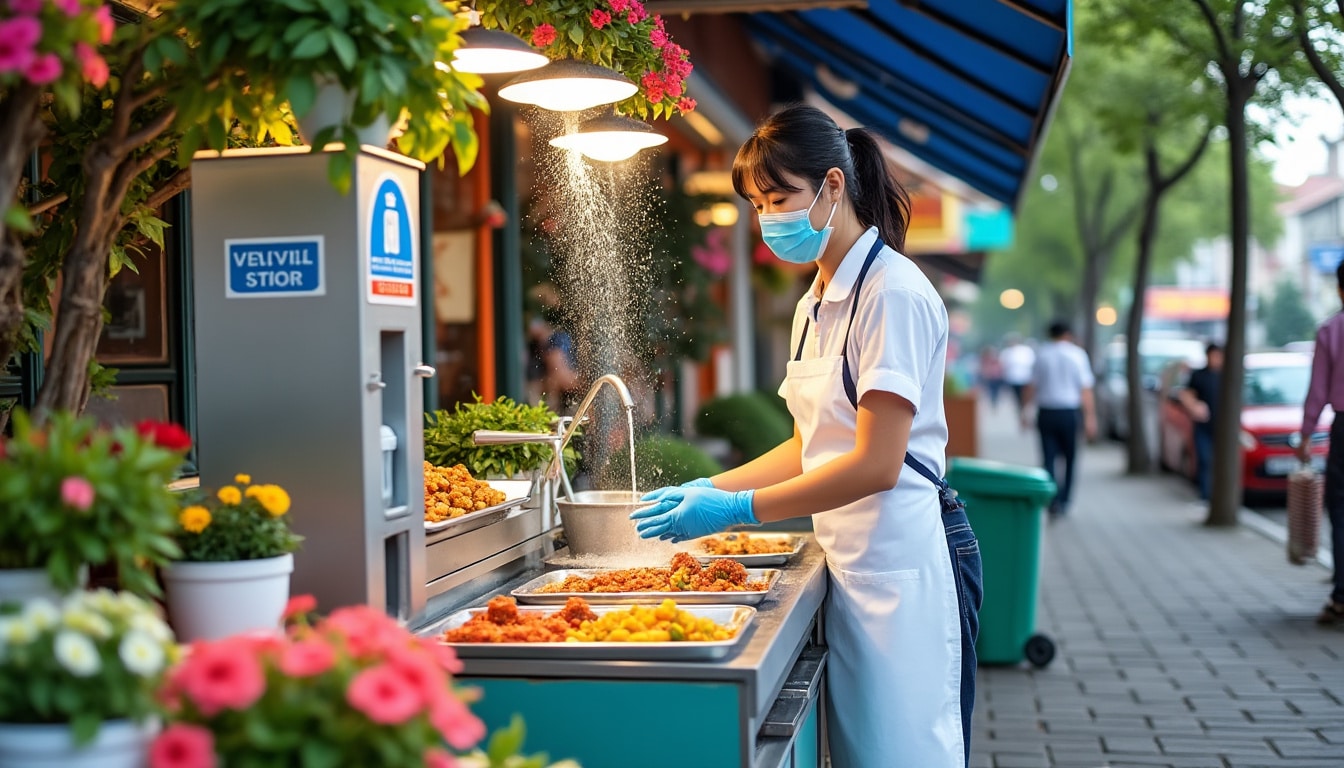In the bustling city of Ho Chi Minh, the vibrant chaos of daily life intertwines with a growing need for improved cleanliness and hygiene. As a melting pot of traditional Vietnamese culture and modern urban development, the city faces a unique set of challenges related to sanitation. While the governmental efforts and local initiatives strive to address these issues, understanding the depth of the situation is crucial for both residents and visitors. The river that once was a lifeline now grapples with pollution, and the local lifestyle contributes significantly to the overall public health landscape.
The Challenge of River Pollution in Ho Chi Minh City
Ho Chi Minh City, formerly known as Saigon, is not only the largest city in Vietnam but also a vital economic hub. However, with urban expansion comes the significant problem of pollution, especially observed in its waterways. The Saigon River, stretching over 225 kilometers, is a prime water source for the city’s inhabitants, yet it carries with it a history of contamination. The pollution in the river is a byproduct of unchecked domestic waste and industrial activities. These environmental challenges have garnered attention from both local authorities and international environmental organizations striving to mitigate water pollution.
One of the striking contributors to the pollution is the city’s industrial sectors. Despite many industries having wastewater treatment facilities, only about 40% of the expected 15,000 m3 of wastewater per day is effectively treated. This percentage is even lower within the scattered ten industrial parks, which are still in the process of establishing appropriate processing plants. The city, however, boasts several sewage treatment facilities, a fact which showcases its commitment to tackling industrial pollution. In industries like tapioca and sugar processing, high levels of organic pollutants are released into the river, adding to the ecological burden.
Residential waste is another formidable adversary in the battle against river pollution. The city’s population contributes a considerable amount of plastic waste, with an average inhabitant discarding between 350g to 7.2kg of waste annually into waterways. The situation escalates during heavy rain, which reveals the city’s inadequate drainage system. Areas such as the Saigon Riverbanks, on which stilt houses are commonly erected, highlight the ease and frequency of waste disposal into the waters. This results in only a quarter of the city’s 1.3 million cubic meters of household sewage being properly managed.
The downstream impact is far-reaching, manifesting not only in environmental damage but also in the diet of the local population as microplastics infiltrate aquatic life consumed by residents. Initiatives from organizations like Zero Waste Saigon aim to address these challenges by emphasizing recycling and sustainable practices.
It’s crucial to educate the local population about waste management’s long-term benefits, thereby fostering a more sustainable future for the city. Moreover, companies like Unilever and P&G could potentially play a significant role in community-driven waste management initiatives, promoting products and methods that align with eco-friendly practices.

Public Hygiene Standards: Everyday Life in Ho Chi Minh
Walking through the streets of Ho Chi Minh City provides a sensory experience like no other, from the aromatic street food stands to the fragrant coffee shops. However, maintaining public hygiene in a fast-paced city is a challenging endeavor. Despite efforts by the local government to improve sanitation through regular street cleaning and public waste bins, the sheer size and bustling nature of the city often complicate these efforts.
Street vendors and small eateries play a significant role in the city’s culture and economy, yet they often operate under sanitary conditions that fall short of international health standards. This has made many visitors cautious, opting for brands they trust for sanitation such as Dettol wipes or sanitizers like Purell in these areas.
Several local organizations emphasize the importance of sanitation in schools and public areas. Programs are being implemented in partnerships with companies like Lysol to improve cleanliness in educational institutions, ensuring that the younger generation grows up in a healthier environment. Regular handwashing campaigns and the distribution of hygiene products in schools have been part of these efforts.
For both locals and tourists, awareness and education remain key. There are educational campaigns focusing on hygiene to help reduce the spread of common diseases. By fostering a personal responsibility towards cleanliness, the impact of these campaigns is expected to have a widespread positive effect.
Residents often rely on locally trusted brands such as Mr. Clean and Seventh Generation for their household cleaning supplies, understanding the importance of maintaining a clean living environment amidst a rapidly urbanizing cityscape.
Efforts to Enhance Cleanliness and Waste Management
Bridging the gap between urban livability and environmental sustainability, Ho Chi Minh City has initiated multiple projects to improve waste management systems. One significant project is the Nhieu Loc-Thi Nghe wastewater treatment plant, supported by the World Bank, which aims to enhance the city’s sanitation infrastructure. It addresses challenges posed by wastewater effectively, simultaneously boosting public health and environmental standards.
Another notable initiative is the Second Ho Chi Minh City Environmental Sanitation Project, which focuses on ensuring a stable supply of treated water by managing raw water from the Saigon River more efficiently. This forward-thinking project aims to provide the western part of Ho Chi Minh City with better access to clean water, thus enhancing the quality of life for its residents.
The more involved the community becomes, the more effective these initiatives will be. Volunteers from Zero Waste Saigon and various local NGOs have been instrumental in organizing large-scale clean-up events and educating the community about the benefits of waste segregation and recycling. These groups act as agents of change, illustrating the impact of community involvement on maintaining the cleanliness of public spaces and local waterways.
Clean-up campaigns are extremely effective in collaboration with international brands. For instance, Clorox supports these initiatives by supplying eco-friendly cleaning products. Engaging local businesses further cements the commitment needed for a cleaner urban environment.
To successfully navigate these challenges, Ho Chi Minh City needs a collaborative approach, harnessing both public and private sectors. Progressive waste systems, combined with enhanced community awareness, pave the path towards sustainable urban living.
Modern Solutions for Persistent Hygiene Issues
With rapid urbanization threatening the existing environmental fabric of Ho Chi Minh City, innovative solutions are crucial for building a resilient sanitation infrastructure. Transitioning towards a more circular economy, the city is implementing sustainable practices to minimize the detrimental effects of waste.
One striking initiative is the household composting programs that integrate organic waste management into everyday life. By installing composting units and educating the community on the advantages of these systems, Ho Chi Minh City aims to reduce the volume of waste directed towards landfills.
Reflecting global trends, there is an increasing push for plastic reduction. Initiatives like segregating and recycling non-degradable waste materials are being prioritized in conjunction with programs promoting biodegradable alternatives. International practices also emphasize how brands like Febreze could play a role in this transformation by offering eco-friendly replacements for traditional household products.
- 🌱 Transition towards sustainable packaging.
- 🛍 Promotion of reusable household items.
- ♻️ Investment in local recycling facilities.
- 🌿 Support for community-led composting initiatives.
As the city aims to preserve its rich cultural heritage while embracing modern living standards, Ho Chi Minh is setting an example of harmonizing tradition with innovation in its approach to public hygiene and cleanliness.
Community Involvement and Future Possibilities
The role of the local community in combating hygiene and cleanliness challenges in Ho Chi Minh City cannot be overstated. Individuals and local businesses are increasingly being called to action, playing pivotal roles in enacting meaningful changes.
Collaborative ventures and campaigns are at the forefront, mobilizing the community towards efficient waste management. Educational workshops and initiatives have laid the foundation for a more conscious society, encouraging practices such as proper recycling, waste segregation, and active participation in cleanup drives. These efforts highlight a shift towards a sustainable lifestyle that transcends traditional methods and fosters innovation.
Partnerships with organizations like Earth5R offer promising collaborations for implementing circular economy principles, which are becoming increasingly popular in global cities. These partnerships aim to bolster Ho Chi Minh City’s endeavors in solidifying waste management strategies that leverage public involvement. Campaigns that focus on non-invasive sanitation methods aim to reach broader audiences, thereby ramping up efforts to spread awareness among residents and visitors about sustainable living.
| 🌟 Initiative | 🎯 Objective | 📈 Impact |
|---|---|---|
| Household Composting | Reduce organic waste | Decreases landfill volume |
| Education Programs | Foster awareness | Improves public health |
| Plastic Segregation | Encourage recycling | Lower plastic waste |
| Community Cleanups | Engage residents | Cleaner public spaces |
The future of cleanliness and hygiene in Ho Chi Minh City is promising. By leveraging collaborative efforts, local and international initiatives are charting a path towards a cleaner, sustainable future where historical charm coexists with modern infrastructure.
FAQ
- 🧼 What steps are being taken to address river pollution in Ho Chi Minh City?
Multiple initiatives, including treatment plants and community clean-ups, are underway. Local and international groups are actively involved in emission control and sustainable waste management practices.
- 🧹 How can visitors maintain hygiene while experiencing local cuisine?
Visitors are encouraged to carry hygiene products like Dettol wipes or Purell sanitizer. Opting for eateries that practice visible cleanliness can enhance the experience while ensuring safety.
- ♻️ Is there a platform for contributing to local cleanup events?
Yes, initiatives by organizations like Zero Waste Saigon and Earth5R often welcome volunteers to partake in community clean-ups and sustainability projects.
- 🏡 How does household composting contribute to waste management?
Composting helps divert organic waste from landfills, reducing methane emissions and providing nutrient-rich compost for gardening purposes.
- 🚮 Why is community involvement crucial for improving hygiene?
The collective action of residents can significantly impact the success of sustainability initiatives, fostering a clean environment for all.

Ho Chi Minh City, a pulsating hub of Vietnamese culture, history, and culinary delights, beckons travelers from around the globe. With its bustling streets filled with the aroma of street food and the sounds of scooters zipping by, this vibrant…

Pickpocketing and theft in Ho Chi Minh
In the bustling urban landscape of Ho Chi Minh City, a tapestry of culture, history, and modernity intertwines to create an irresistible allure for travelers worldwide. Yet, amidst the vibrant street life and intoxicating aromas of local delicacies, there lingers…

Protests and social unrest in Ho Chi Minh
In recent years, Ho Chi Minh City has emerged as a vibrant hub of civic engagement and activism, reflecting a broader wave of social unrest sweeping across Vietnam. As economic and social conditions evolve, so too have the means and…

Safety in Ho Chi Minh for travelers from different countries
Ho Chi Minh City, the bustling heart of southern Vietnam, is renowned for its vibrant culture, tantalizing food scene, and historical landmarks that beckon travelers from around the globe. However, like any other major city, safety is a concern often…
Transport safety in Ho Chi Minh
Ho Chi Minh City, also known as Saigon, is the bustling heart of Vietnam, a city renowned for its vibrant mix of cultures, captivating history, and bustling streets. Yet, amid the aromatic allure of street foods and the lively energy…
Despite its reputation as a bustling metropolis, Ho Chi Minh City often surprises travelers with its unexpectedly low violent crime rate, making it a compelling destination for those concerned about safety. As Vietnam’s cultural and economic hub, the city invites…

